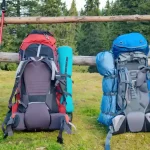
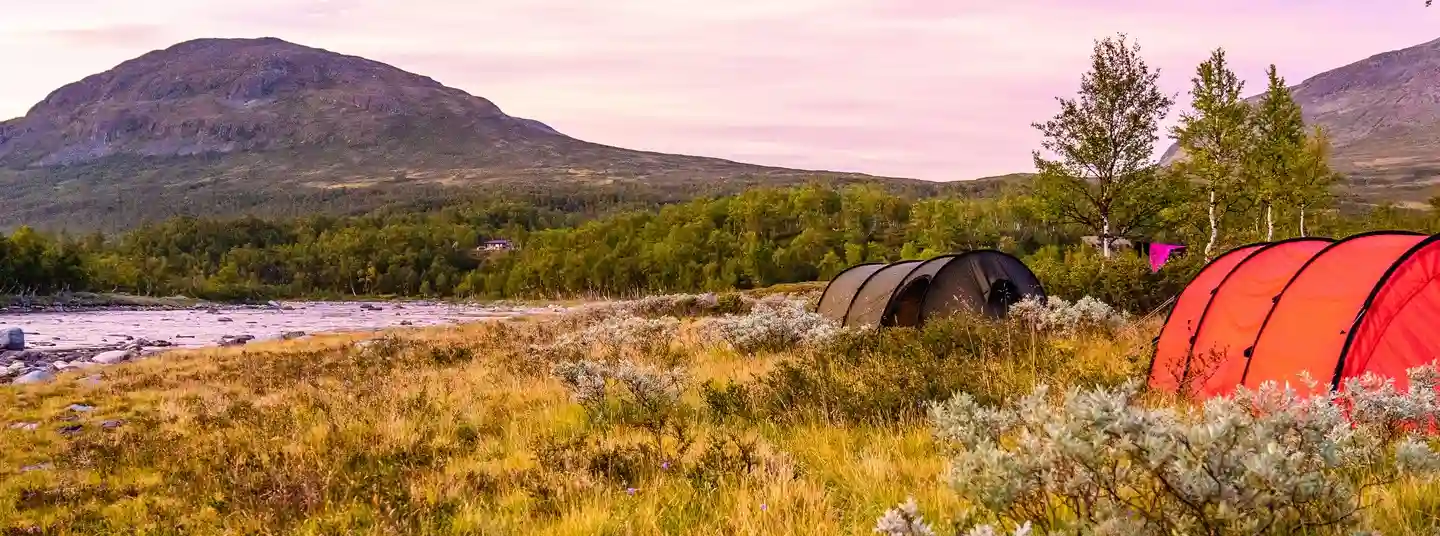
As we shed the thick blankets of winter and embrace the budding life of spring, we’re also met with a fresh season of adventures. Spring camping calls to us, offering the perfect blend of warmth and greenery, and yet, it carries the question mark of unpredictable weather. We understand the challenges that come with this unpredictability and we’ve harnessed our collective experiences to craft a set of spring camping tips designed to ensure your spring camping weather safety and preparedness.
One moment, the sun could be your companion, the next, a sudden shower your uninvited guest. But fear not, for with our knowledge on dealing with unpredictable weather, you’ll find yourself more than capable of facing whatever conditions arise. It’s the preparation that makes the difference, and our spring camping weather preparedness tips are the cornerstone of a successfully planned spring getaway.
Whether you’re setting up camp in the temperate rainforests of Olympic National Park or along the breezy shores of the Oregon Coast, the key to an enjoyable spring camping experience lies not only in where you go but how well you prepare for the caprice of Mother Nature. Be ready to experience it all, from fresh blooms to unexpected gusts, safe in the knowledge that you’re well-equipped for the journey ahead.
Key Takeaways
- Thorough preparation ensures a safe and pleasant spring camping experience.
- Understanding and adapting to quick weather changes can turn challenges into adventures.
- Packing the right gear is critical for comfort and safety during spring’s unpredictable weather.
- Regular weather check-ins are vital to stay informed and react quickly to any changes.
- Choosing the right campsite can offer natural shelter from inclement weather conditions.
Embracing the Unpredictability of Spring Camping
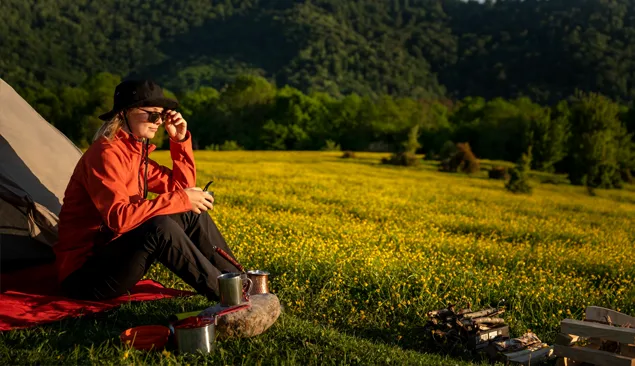
As the thawing embrace of winter gives way to the burgeoning life of spring, we find ourselves at the cusp of prime camping season. Early spring camping trips beckon with the promise of solitude and the raw beauty of nature in bloom. There’s an undeniable charm in the unpredictability of spring, as it challenges us to adapt and appreciate the raw beauty of the outdoors in flux.
Why Spring is a Unique Time for Camping
Spring presents a rare balance—the remnants of winter’s stillness with the whispers of summer vitality dancing on the horizon. During this season, we can savor the last crisp mornings before the warmth of full-blown summer takes hold. It’s a time when the spring camping weather tips and tricks we’ve accumulated serve as a manifesto for adventure, guiding us through the unpredictability with a spirit of discovery.
Spring Camping in the Pacific Northwest
There is perhaps no better place to witness the majesty of spring than the Pacific Northwest. Amidst the towering conifers and cascading waterfalls of Olympic National Park and the rugged coastlines of Oregon, spring-time campers are greeted with fewer crowds and the unspoiled beauty of the natural world. It is here that our spring camping weather essentials—a sturdy tent, a versatile sleeping bag, and weather-responsive gear—prove their worth, fortifying us against the region’s mercurial elements.
Benefits of Camping during Spring Season
The benefits of a springtime sojourn in the great outdoors are manifold. Lower campground traffic results in a more intimate connection with the environment, allowing for peaceful moments under a canopy of fresh foliage and blooms. The elements, often seen as hurdles, become part of the adventure, melding every sunny day with the refreshing surprise of an occasional rain shower. Armed with our best spring camping weather tips and tricks, we transform each potential challenge into an opportunity for growth and enjoyment.
- Preparation elevates the unpredictable to the unforgettable
- Lower crowds offer tranquility and a personal interaction with nature
- Spring’s fluctuating conditions foster resilience and resourcefulness
So let us don the mantle of the spring camper, balancing excitement for what lies ahead with the practical wisdom of experience. With early spring camping trips, we not only witness the revival of the Earth but also partake in a journey of revival within ourselves.
Spring Camping Weather Preparedness Tips for Dealing with Unpredictable Spring
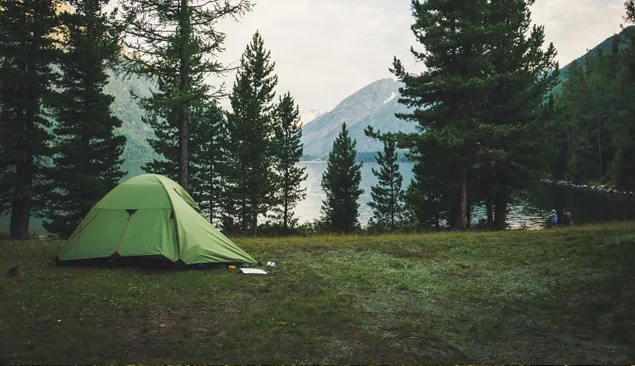
As we watch the tones of spring dance through the forests and meadows, we are reminded that preparation is the bedrock of a successful early spring camping trip. We make it a point to keep a close eye on the weather forecasts, staying vigilant both before our journey and as we embark on our outdoor adventure. Knowledge is power, and with the right information, we can choose our gear and attire wisely, ensuring we’re equipped to handle whatever conditions spring may unveil.
Spring’s unpredictability often whispers promises of rain. To stay ahead of the game, we’ve put together a **spring camping weather checklist** that includes a bounty of weather-hardy clothes and reliable gear designed to keep us warm and dry. We recommend testing each piece of equipment before setting out, ensuring everything from your tent’s waterproof rating to the reliability of your cooking stove is ready for the elements. In the event of persistent rainfall, the option to rent yurts or cabins at state parks has always been our safety net, merging the rustic essence of camping with a sturdy shelter over our heads.
- Regularly check weather updates before and during the trip
- Pack a variety of clothing suitable for sudden changes in weather
- Inspect all camping equipment for potential wear or damage
- Consider alternative accommodations like yurts or cabins for extra protection
- Bring gear that can resist wind and water, such as sturdy tents and tarps
It’s these **spring camping weather tips and tricks** that transform our experiences from good to great. They are the shared secrets that turn stories of shivers and soaks into tales of cozy camaraderie around a campfire, despite a trickling sky. And whenever nature decides to challenge us with a brisk gale or an unexpected downpour, it’s our readiness that defines the essence of joy and safety in our early spring camping trips.
We invite you to embrace these practices and add your own flair to your preparations. Every camper has their unique approach to facing the whims of spring, and we encourage you to discover the wisdom of the wild as you prepare for each excursion. Together, let’s welcome the spring season, equipped not just with gear, but with the adaptability and spirit of true adventurers.
Packing Essentials for a Spring Camping Weather Checklist
As we gear up for a season of adventure, it’s vital to focus on spring camping weather essentials to ensure every trip is a success. Compiling a detailed checklist is the first step in tackling the unpredictability of spring’s weather. Let us prepare you with expert-recommended items and tips to enhance your spring camping weather preparedness.
Must-Have Items for Inclement Weather
When packing for spring camping, always consider the possibility of inclement weather. It’s important to have an arsenal of gear that can withstand unexpected rain, wind, or even snow. Here’s a rundown of some indispensable items you should not leave behind:
- Water-resistant footwear for navigating wet terrain.
- Thermal base layers for insulation during colder mornings.
- A high-quality waterproof jacket to keep the rain at bay.
- An extra set of moisture-wicking apparel.
Weatherproofing Your Gear
Keeping your belongings dry and protected is just as critical as personal weatherproofing. That’s why part of our spring camping weather safety strategy includes essential gear modifications:
- Durable, waterproof tarps to shield your tent from rain and ground moisture.
- Sealants for tent seams to prevent any leaks.
- Waterproof cases for electronics and important documents.
Staying Comfortable and Dry with the Right Equipment
Your comfort during spring camping is largely dependent on the equipment you choose. To stay cozy and dry, select gear that can handle the delicate variances of the season:
- A reliable three-season tent that affords protection and ventilation.
- A moisture-resistant sleeping bag suitable for colder spring nights.
- Insulating sleeping pads to retain body heat and provide cushioning.
Remember, the key to a delightful spring camping experience lies in your preparedness. With these spring camping weather essentials, you’re ready to embrace the great outdoors, regardless of the forecast.
| Item | Function | Recommended Product |
|---|---|---|
| Water-resistant footwear | Protect feet from moisture | Merrell Moab 2 Mid Waterproof Hiking Boots |
| Thermal base layers | Provide warmth and insulation | Under Armour Men’s ColdGear Base 4.0 Leggings |
| Waterproof jacket | Shield against rain and wind | Patagonia Torrentshell 3L Jacket |
| Moisture-wicking clothing | Manage perspiration effectively | Columbia Omni-Wick T-Shirt |
| Durable tarps | Add an extra layer of moisture protection | Aqua Quest Defender Tarp |
| Sealants for tent seams | Prevent water leaks | Gear Aid Seam Grip WP Waterproof Sealant and Adhesive |
| Waterproof cases | Keep electronics and documents safe | Pelican 1060 Micro Case |
| Three-season tent | Earn tranquility in various conditions | REI Co-op Passage 2 Tent |
| Moisture-resistant sleeping bag | Keep warm and dry overnight | Marmot Trestles 15 Sleeping Bag |
| Insulating sleeping pad | Enhance sleep comfort and warmth | Therm-a-Rest NeoAir XTherm Sleeping Pad |
Setting Up Camp with Weather in Mind
As we welcome the vibrant hues and crisp air of the spring season, establishing a camp that can brave the elements becomes an art form. Just like an artist selects their palette with care, we too must choose our campsite with a discerning eye. Finding that sheltered nook or an area with ample morning sunlight can transform our camping experience. Armed with spring camping weather tips, let’s delve into creating a sanctuary in the wilderness that anticipates every possible mood of Mother Nature.
Imagine the symphony of a gentle rain on the rooftop of a well-assembled tent. This is the melody we can enjoy rather than endure by ensuring our shelter is robust against surprise showers. Here’s our essential spring camping weather checklist for setting up your campsite:
- Scout for natural shelters: Use the landscape to your advantage; thick trees or a subtle incline can shield from prevailing winds.
- Assess for water run-off: Avoid low spots that could become small ponds during a downpour. Elevation is your friend.
- Tarp triumphs: A well-placed tarp over your tent acts as a barrier to dew and drizzle, while another beneath your tent wards off ground moisture.
- Secure stakes: Invest in sturdy tent pegs for a steadfast abode, capable of withstanding a sudden gust or storm.
- Orientation optimization: Pitch your tent to catch the dawn’s warmth, aiding in drying any overnight dampness.
We don’t just set up camp; we craft a temporary homestead that respects and anticipates the caprices of spring weather. Tying down every loop, angling the rain fly correctly, and embracing the role of nature’s neighbor rather than its adversary—it’s all part of our covenant with the great outdoors. By meticulously preparing, we aren’t just dealing with unpredictable weather—we’re embracing it as part of the spring camping charm.
Adapting to Weather Changes While at Camp
When embarking on early spring camping trips, we know the importance of being ready for anything the spring camping weather throws at us. Weather preparedness is not only about having the right gear; it’s about staying alert and making smart choices once you’re cozied up in nature’s embrace. Below, we’ll walk you through how to ensure weather doesn’t dampen your spirits or your campfire.
Monitoring Weather Conditions During Your Trip
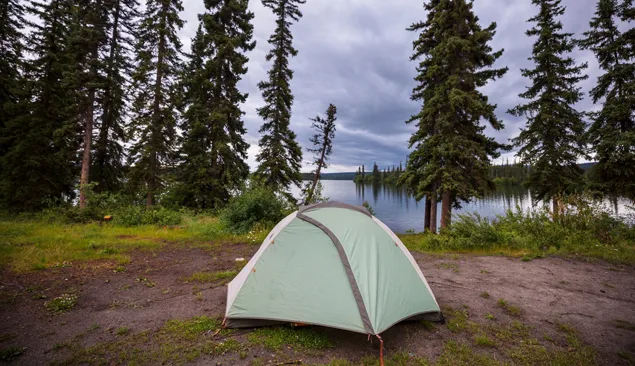
We cannot stress enough the importance of keeping an eye on the weather throughout your camping experience. With the help of up-to-date forecasts, we remain vigilant against sudden temperature changes or incoming storms, safeguarding ourselves from potential risks like hypothermia. Regular checks on your trusty weather app or a portable weather radio means we’re never caught off guard—because spring camping weather safety is our top priority.
Making the Most of a Rainy Camp Day
Don’t let a bit of rain dampen the adventure. In fact, we turn a drizzly day into an opportunity for coziness. There’s something special about wrapping your hands around a warm mug, savoring hot drinks and delicious, nutrient-packed meals that fuel the body and warm the heart. A spacious tent or the shelter of a canopy becomes our own private dining room, allowing us to relish every raindrop while staying dry and content.
Warm Up Strategies for Cold Spring Evenings
As dusk approaches and the temperatures drop, our spring camping weather preparedness tips come into full play. Huddled around a cheerful campfire, we share stories and warmth. When it’s time to retreat, we slip into our mummy-style sleeping bags, an ideal cocoon that harnesses body heat, complemented by our insulated layers carefully chosen for just these moments. It’s our way of greeting the night with a snug assurance that bespeaks the wisdom of preparedness.
- Stay up-to-date with weather conditions using reliable apps and devices
- Have contingency plans for protected mealtime during rainy weather
- Equip your camping gear with cold-weather comforts for a snug night’s sleep
- Ensure all members of the camping party are well-versed in safety protocols
Together, we embrace the charm of spring’s fickle moods, armed with knowledge and gear to ensure every outing remains an unforgettable experience.
Staying Safe: Spring Camping Weather Safety Tips
As we venture out to enjoy the rejuvenating aura of springtime camping, our focus on safety is as important as the gear we bring. The unpredictable weather challenges our adaptability and preparedness, especially when it comes to guarding against the colder elements. It’s not just about enduring the elements but about being proactive to ensure an enjoyable and safe outdoor experience.
Understanding Hypothermia Risks
Hypothermia is a silent threat that can take hold during spring camping excursions, where temperatures may fluctuate rapidly. Understanding the signs and keeping our bodies adequately insulated are fundamental spring camping weather safety measures. Knowledge is power, and recognizing early symptoms such as shivering, slurred speech, and clumsiness can be lifesaving.
Emergency Planning and Weather Alerts
We always emphasize the importance of having an emergency plan in place. Spring camping weather preparedness tips often include registering for weather alerts and understanding the protocols of your chosen campsite in case of severe weather. Proactive planning, including keeping a portable battery-operated radio and a well-stocked first-aid kit, can mitigate the chaos of unexpected weather changes.
Safe Shelter Options for Extreme Weather
In the face of extreme weather, selecting the right type of shelter is imperative. We differentiate our gear based on the forecast, often favoring three-season tents known for their resilience against heavy rains and winds. For those moments when the spring unleashes its extreme moods, we ensure our shelter options are robust, securing our safety while dealing with unpredictable weather.
- Invest in a reliable three-season tent with strong waterproofing capabilities.
- Bring along extra water-resistant layers and an insulated sleeping pad to guard against cold ground temperatures.
- Equip yourself with necessary safety gear like waterproof matches and a high-quality first aid kit.
- Stay informed by monitoring the weather forecast and keeping a list of local emergency contacts handy.
Conclusion
As we’ve journeyed through the fabric of this guide, we’ve armed ourselves with robust spring camping tips that promise not just survival, but a flourishing experience amidst the caprice of spring’s moods. Veteran campers know that the difference between adversity and adventure lies in preparation. We’ve underscored the importance of spring camping weather preparedness tips, arming you with knowledge crucial for both excitement and safety. From the moment you plan your trip to the final day of your excursion, every detail from gear selection to weather foresight has been meticulously covered to ensure your confidence under the open sky.
The unpredictable nature of spring’s weather is not a deterrent, but rather an invigorating challenge. With each tip and trick we’ve discussed, from understanding the landscape to selecting the right equipment, you take a step closer to mastering the art of spring camping. Our discussions on waterproof gear and strategies for comfort have revealed that spring showers and chills can actually enhance the wild’s allure, transforming what could be seen as obstacles into opportunities for growth and enjoyment.
We invite you to embrace the serenade of a rainy canopy and the invigorating breath of early morning chills, for these are the melodies and moments that define spring camping. Let your spirit awaken with the dawn chorus and find solace in the knowledge that you are prepared for whatever wonders or weather spring bestows upon you. Through this guide, we’ve woven a tapestry of spring camping weather tips and tricks, ensuring that your time in nature is woven with exhilaration and serenity. So go forth, prepared and eager, to capture the true spirit of spring in the wild.
FAQ
Why is spring considered a unique time for camping?
Spring offers a blend of the peacefulness of post-winter solitude and the anticipation of summer vibrancy. Campgrounds are less congested, nature is filled with new life, and the weather provides diverse conditions for a memorable outdoor experience.
Where are some recommended spots for spring camping in the Pacific Northwest?
The Olympic National Park and the Oregon Coast are fantastic destinations in the Pacific Northwest. They offer stunning natural beauty with fewer crowds, allowing for a serene camping experience during the spring season.
What are the benefits of camping during the spring season?
Spring camping affords you the chance to enjoy nature’s renewal, with quieter campgrounds, budding flora, and the opportunity to witness wildlife emerging from winter. The reduced crowd sizes also contribute to a more intimate connection with nature.
What should I include in my spring camping weather checklist?
Your checklist should contain weather-resistant clothing and gear such as waterproof shoes and jackets, thermal underlayers, a durable tarp, and a quality three-season tent. Also, don’t forget essential campsite equipment like a reliable cook set and warm sleeping bag.
How can I weatherproof my camping gear for spring?
You can weatherproof your gear by ensuring your tent is waterproof, using tarps above and beneath your camp area for extra moisture protection, and sealing any seams or potential leaks in your camping equipment.
What are the must-have items to stay comfortable and dry in inclement weather?
Invest in water-resistant footwear, a high-quality rain jacket, and layered clothing that can be adjusted to changing conditions. A waterproof tarp, moisture-wicking materials, and a sleeping bag rated for lower temperatures are also vital.
How should I set up my camp with the weather in mind?
Choose a campsite that is sheltered from the wind and likely to receive morning sunlight. Make sure to place a waterproof tarp under your tent and ensure your sleeping area is elevated slightly to avoid any water accumulation.
What strategies can help me adapt to sudden weather changes while camping?
Regularly monitor the weather forecast, have an array of layered clothing ready for temperature fluctuations, and prepare for activities that can be enjoyed despite the weather, such as board games or storytelling during rainy moments.
How can I stay safe and avoid hypothermia during spring camping trips?
Dressing in layers to manage body temperature, staying dry with appropriate gear, and understanding the early symptoms of hypothermia are key. Always have a plan to quickly warm up if you get cold, such as hot beverages or an emergency blanket.
What should my emergency plan include regarding weather changes?
Your plan should include knowledge of the nearest shelters, a way to receive weather alerts even while off-grid, and a list of emergency contacts. Keep items like waterproof matches, a whistle, and a first-aid kit easily accessible.
What are safe shelter options in case of extreme weather conditions?
Consider renting a yurt, cabin, or other sturdy structure available at many state parks. These options offer better protection against severe weather while still providing an authentic camping experience.
Author

Tom Miller
Tom is a seasoned camper and outdoor adventurer, with decades of experience exploring the wilderness. He's a retired park warden and has spent his life studying the flora and fauna of the natural world. Tom is a skilled outdoorsman, with a particular interest in backcountry camping, mountaineering, and wilderness survival. He's also an accomplished writer and has published several books on outdoor recreation.
Recent Posts


